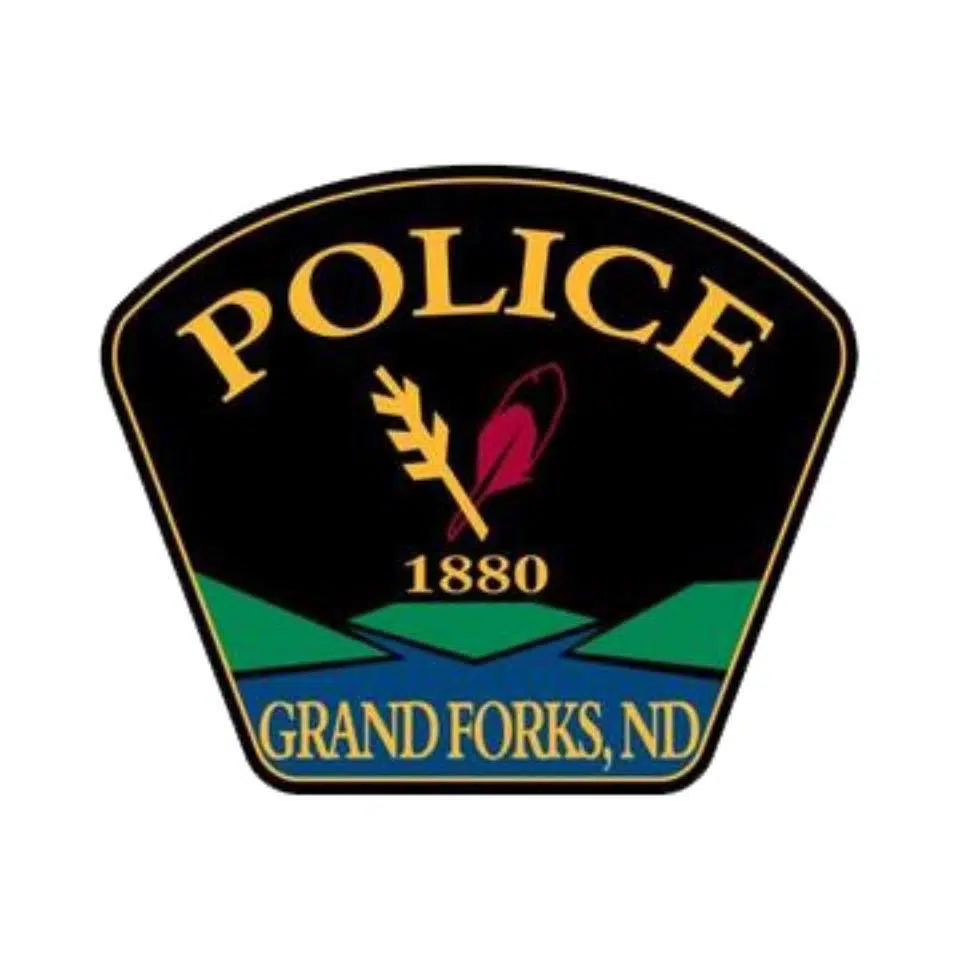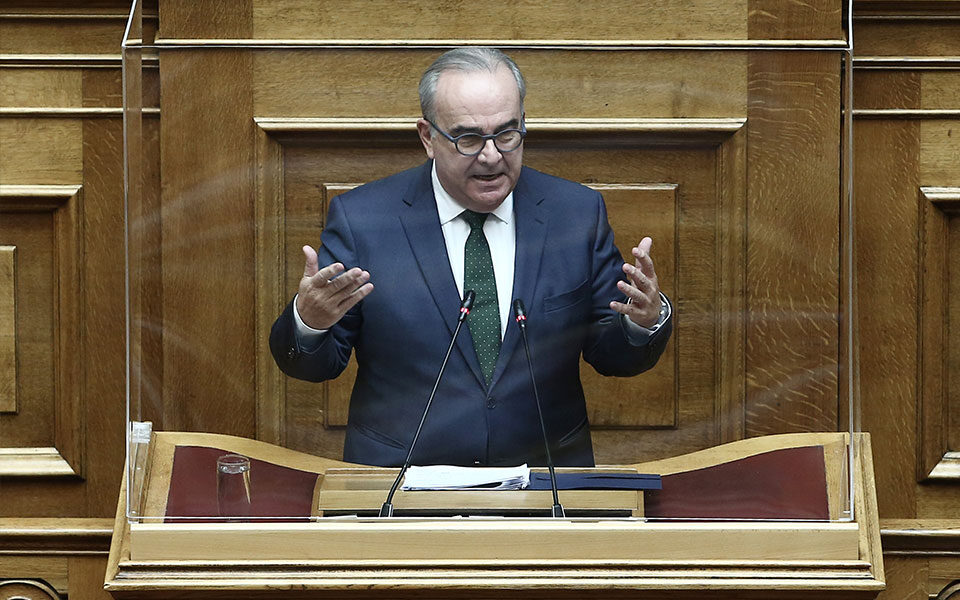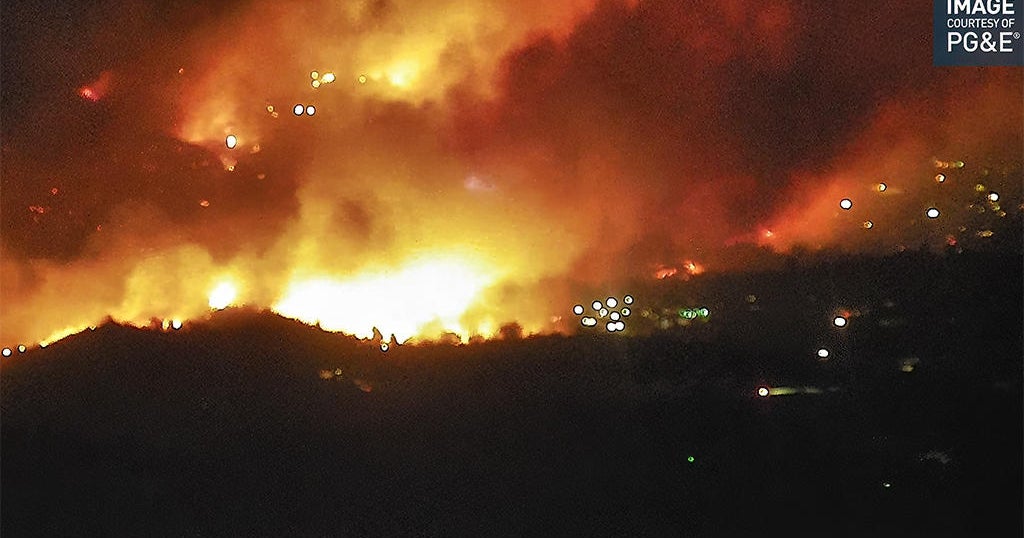North Dakota
North Dakota’s own residents once saw it as ‘dying.’ How did it become one of the fastest-growing states?

FARGO — Not so long ago North Dakota’s vital signs were all spiraling downhill and a bleak current of pessimism ran through a population that was aging and dwindling.
From 1981 to 1985, North Dakota lost $1.3 billion in gross business volume and almost 19,000 jobs.
North Dakota in the early 1990s had the unwanted distinction of being the only state in the union to have fewer residents than in the 1930s.
Per capita income had steadily fallen since 1975, dropping to 15% below the national average by 1990.
Perhaps most worrisome of all, young people were leaving North Dakota in droves. During three years in the late 1980s alone, 17,000 people between the ages of 22 and 55, the most productive years, left to seek jobs elsewhere.
“If you lose your human capital then you are in a dire situation,” said Eddie Dunn, a former vice president of the Greater North Dakota Association, as the Greater North Dakota Chamber once was called.
The “brain drain” of young talent also exacerbates the aging of the population. “It’s not a good scenario,” Dunn said.
Business leaders took stock and agreed something had to be done. Something big to alter North Dakota’s alarming downward trajectory.
“Is North Dakota Dying?” a bold-faced headline asked provocatively in an insert stuffed into newspapers around the state in 1989. “Will we stand by and watch?”
A gauntlet had been thrown down. But would people pick it up and work together to reverse the slide?
The 1980s punished North Dakota. An oil boom went bust. A farm crisis, triggered by a wheat embargo and driven by soaring interest rates, thrust hordes of farmers into bankruptcy. And a punishing drought in 1988 and 1989 parched crops.
Around that time, a husband-and-wife team of social researchers proposed that large swaths of the struggling Great Plains be converted into game preserves and ecotourism destinations, an idea known as the Buffalo Commons.
The provocative newspaper insert, a report by a group called the North Dakota 2000 Committee, asked residents what kind of future their children could look forward to in North Dakota? How can we continue our quality of life? What opportunities are available to you?
Despite the glaring signs of economic and demographic disaster, meetings around the state found that the prevailing attitude was to hunker down and wait for conditions to improve.
“The attitude at that time was we just have to wait it out,” said Dunn, who helped organize the effort. “Because that had worked in the past.”
A team of specialists from SRI International, formerly Stanford Research Institute, examined the challenges and concluded that hunkering down wasn’t an option. A massive, concerted effort was required.
That initiative became known as Vision 2000, regarded as the most comprehensive economic development project in the history of North Dakota — and one Dunn believes has had lasting benefits.
The effort was guided by a diverse group of 28 business leaders, educators, civic leaders, union members and others from around the state. The committee had extensive input. Almost 7,000 people attended town hall meetings held in 40 communities around the state to offer suggestions.
Vision 2000 was instigated in the late 1980s by William Marcil, who was then chairman of the Greater North Dakota Association. He insisted on a committee that would bring together diverse voices from around the state.
“We had some really good people,” he said. Then Gov. George Sinner had a parallel effort that he called the Committee of 100. In time, the efforts merged. “We were all after the same goals,” Marcil said.
At the time, wheat was selling for less than $5 a bushel and oil was $35 a barrel, he said. “The state was in dire straits at that point.”
Bill Patrie, who served as Sinner’s economic development director, said North Dakota suffered more business failures in the 1980s than during the 1930s, the time of the Great Depression and Dust Bowl.
As work progressed, suggestions were molded into a wide range of policy recommendations, touching upon education, technology transfer, capital formation and fostering a more competitive business environment.
Many of the economic development recommendations were compiled into a massive bill, introduced in 1991, a policy tool set that became known as Growing North Dakota.
Many of the economic development tools remain in use today, including the PACE and AgPACE lending programs, in which the Bank of North Dakota subsidizes interest rates on loans generated by local banks, a way to make low-interest loans widely available around the state.
A case in point: One of the Vision 2000 committee’s 28 members was a young entrepreneur named Doug Burgum. Capital was so hard to come by that he famously put up as collateral his share of the family’s agribusiness in Arthur, North Dakota, to help Great Plains Software flourish, eventually being acquired by Microsoft in 2001 for $1.1 billion.
Burgum, of course, would later become North Dakota’s 33rd governor. Among other business interests, Burgum co-founded Arthur Ventures, a venture capital company that invests in startups.
“It was an amazing group,” Burgum said of serving on the Vision 2000 committee as its youngest member, a group he later chaired, replacing Marcil.
“Man, it was dark,” Burgum said, recalling public sentiment at the time. “Every young person was leaving.”
Contributed
Burgum said he’s sometimes thought it would be helpful to launch a successor campaign to further spur business development and innovation, perhaps called Vision 2040.
While many concrete and lasting steps came from Vision 2000, including Growing North Dakota, Marcil said he believes the effort’s greatest achievement was helping to overcome the pervasive pessimism gripping the state, and to instill a greater entrepreneurial spirit.
“The main focus was to try to develop a more positive attitude in North Dakota,” he said, recalling overhearing farmers at a cafe in a rural community predicting a man who was opening a tire store was destined to fail.
“There are more opportunities now,” said Marcil, who is chairman of Forum Communications Co., which publishes The Forum. “You keep reading and hearing of young people moving back to the state, because they can make a living. Back in the ‘80s, they couldn’t.”
Patrie, who later promoted economic development for North Dakota Rural Electric Cooperatives after leaving the Sinner administration, believes one of the biggest achievements of the collaborations including Vision 2000 was fostering homegrown development.
Instead of seeking big out-of-state investors, North Dakotans rolled up their sleeves, raised their own capital and found their own solutions, Patrie said.
One major example was the rise of farmer-owned cooperatives, which succeeded in establishing a corn-milling plant in Wahpeton and a pasta plant in Carrington. But the movement faded after farmer-owners decided to collect their profits, selling out to corporations, he said.
The height of the momentum created by Vision 2000 came from 1991 to 2001, in Patrie’s view, then relapsed to a greater dependence on seeking out-of-state investors for projects.
“I’d say the bloom was off the rose in 10 years,” he said. “It was a good run.”
In the years since Vision 2000, North Dakota was transformed from an aging state to one of the youngest states in the nation, with major gains in personal income and other population and economic indicators.
North Dakota’s economy has more than doubled since 2000, even adjusted for inflation. The state’s gross domestic product increased from $24.7 billion in 2000 to $37.9 billion by 2010. During that decade, per capita incomes, also adjusted for inflation, increased markedly, rising from $38,314 in 2000 to $55,870.
But the most dramatic increases came between 2010 and 2020 — following the Bakken Formation oil boom. North Dakota’s inflation-adjusted gross domestic product shot up to $53.6 billion, and inflation-adjusted per capita income climbed to $59,552 in 2020.
Similarly, the state’s population turned around. After dropping from 652,717 in 1980 to 638,800 in 1990, it rebounded to 641,298 by 2000. But North Dakota’s population didn’t surpass its 1930 peak, 680,845, until 2011, when, propelled by the booming Oil Patch, rose to 685,476.
Still, population has steadily increased since the boom subsided around 2015, reaching 765,309 by 2020. North Dakota was the fourth-fastest growing state from 2010 to 2020, when population increased by 16%.
To put that growth in perspective: North Dakota added 106,670 people between 2010 and 2022, or about the population of Fargo in 2009.
Even with an assist from the oil boom, Vision 2000 deserves credit for altering the state’s once-dire trajectory, Dunn said.
“North Dakota would not be what it is today if not for Vision 2000,” he said.
Patrie sees it differently, and said the oil boom of the early- to mid-2000s, enabled by innovative horizontal drilling and hydraulic fracturing methods, was transformative in reversing the state’s slide.
“It just superseded everything,” Patrie said. “That changed everything.”
Many of the wide-ranging recommendations that came out of Vision 2000 have become engrained, with ongoing effects. College campuses now are more focused on workforce needs and research that helps drive the economy, Marcil said.
The Bank of North Dakota’s low-interest PACE lending programs remain a mainstay in the state’s economic development toolkit.
Cumulative figures for the program since its inception in the early 1990s aren’t available, but the Bank of North Dakota has participated with local banks around the state to originate 1,751 loans totaling $763 million from 2015 to 2023.
The total value of loans during that period has multiplied more than five-fold, from $49 million to $203 million, for projects as diverse as agriculture, biofuels, medical and affordable housing.
“The PACE programs are our most widely utilized programs, and are well known for their ability to meet a wide range of economic development funding needs,” said Todd Steinwand, the Bank of North Dakota’s president and CEO. “Local lenders across the state use them to build the best deal for their customers.”
North Dakota’s growth, however, has been mostly concentrated in urban centers. The state’s eight most populous cities accounted for 90% of the state’s total population growth in the past decade, according to the North Dakota State University Center for Social Research.
In most of rural North Dakota, the same pessimistic views that were prevalent in the 1980s probably still apply, Patrie said.
“The work isn’t over,” Dunn said. “It’s largely been the metropolitan areas, and the rural areas are still not participating fully in that.”

North Dakota
One Killed in Grand Forks Murder

(KNOX) -According to the Grand Forks Police Department officers were dispatched to Sledster’s Food and Brew, 21 South 4th Street in downtown Grand Forks Thursday evening for a shooting in-progress incident.
Upon arrival at Sledster’s, officers located one adult victim on the floor inside with apparent gunshot wounds. Life-saving measures were immediately rendered to the victim. However, they ultimately succumbed to their injuries.
The suspect of the shooting incident was located and detained at Tea and Crepe’s at 307 Demers Ave in Grand Forks without incident. The suspect was identified as 26 year-old Nicholas Narveson of Grand Forks. Narveson was arrested and taken to Grand Forks County Corrections, charged with Murder.
There was no threat to the public.
The Grand Forks Police Department was assisted at the scene by the Grand Forks Fire Department and Altru Paramedics.
North Dakota
Weather Wednesday: telegraphic coded weather observations

BISMARCK — Bismarck, Omit, Leafage, Buck, Bank. That was the telegraphic code found on this thin piece of paper, hidden in this silk dress from the 1800s.
Wayne Chan decoded the mysterious message which turned out to be a meteorological one, detailing the weather conditions on May 27, 1888. “I’ve never seen any code that wasn’t meant for secrecy be so complex.”
But in the 1800s the U.S. Army Signal Service used this complex code to send weather reports from across the country to the central Signal Service in Washington, DC through telegram, which charged by the word.
“Basically they’re trying to compress several variables down to one word to save money when they transmit the message,” Chan explains.
Here’s how it breaks down: the first word is the reporting weather station: Bismarck. The second word: OMIT represents temperature and air pressure: 56 degrees with a barometric pressure of 30.08”. The next word LEAFAGE is code for dew point and observation time: 32 degrees at 10pm eastern time. BUCK reveals the wind direction and precipitation, it was a dry day with a north wind. And the final word BANK translates the wind speed of 12mph and sunset conditions which were clear on May 27, 1888.
These condensed weather reports in the beginning of the telegraph era were sent to the D.C. weather office three times a day where meteorologists there would decode the messages and create a national weather map of current conditions… a collection of reports traveling faster than the weather for the first time in history.
Meteorologists would use these weather observations as a base for creating a national forecast within two and a half hours of receiving the reports. The forecast would then be sent through telegram to cities and newspapers across the Union, to help alert people of what type of weather was heading their way… all thanks to these condensed, coded messages.
“It’s kind of like texting, you are compressing and using abbreviations and emojis to compress the message,” Chan adds. Though 136 years later, a text of Bismarck, Unit, Lashing, Silvan, Noisy, Ice would be difficult for to decipher, especially without the correct codebook.
Many weather stations in the 1800s were located near the telegraph office so the reports could be quickly transmitted since they had high priority. Telegraph operators were supposed to send the weather reports before almost anything else.
North Dakota
Death Investigation: North Dakota Person Died After Consuming Recalled Microdosing Candies – KVRR Local News

BISMARCK, N.D. (KVRR/NorthDakotaMonitor) — A person in North Dakota died after consuming recalled microdosing candies.
The death is under investigation by state agencies, the poison control center and FDA.
The FDA published a recall on June 28 of some Prophet Premium Blends Diamond Shruumz products.
They are marketed as containing a proprietary blend of mushrooms.
As of July 1, 48 illnesses, including 27 hospitalizations, have been reported in 24 states.
North Dakota is the only state where a death is being investigated.
North Dakota officials are warning the public because the recalled products could still be available for sale online, in stores that sell hemp-derived products, or in smoke and vape shops, said Michelle Dethloff, director of the infectious diseases and epidemiology unit.
The products are not illegal but they are not licensed or regulated by the state.
State officials would not provide specifics about when or where in North Dakota the death occurred or the person’s age, citing privacy reasons. The person who died is an adult, Dethloff said. The exact cause of death remains under investigation.
-

 News1 week ago
News1 week agoToplines: June 2024 Times/Siena Poll of Registered Voters Nationwide
-

 Politics1 week ago
Politics1 week agoPopular Republican and Trump running mate contender makes first Senate endorsement in 2024 races
-

 Politics1 week ago
Politics1 week agoFox News Politics: Trump Ungagged…Kinda
-

 News1 week ago
News1 week agoIowa floodwaters breach levees as even more rain dumps onto parts of the Midwest
-

 Politics1 week ago
Politics1 week agoThe many faces of Donald Trump from past presidential debates
-

 Politics1 week ago
Politics1 week agoMike Kennedy advances past crowded GOP primary to secure nomination for open Utah House seat
-

 News5 days ago
News5 days agoVideo: How Blast Waves Can Injure the Brain
-

 News1 week ago
News1 week agoNew Jersey gamer flew to Florida and beat fellow player with hammer, say police


















